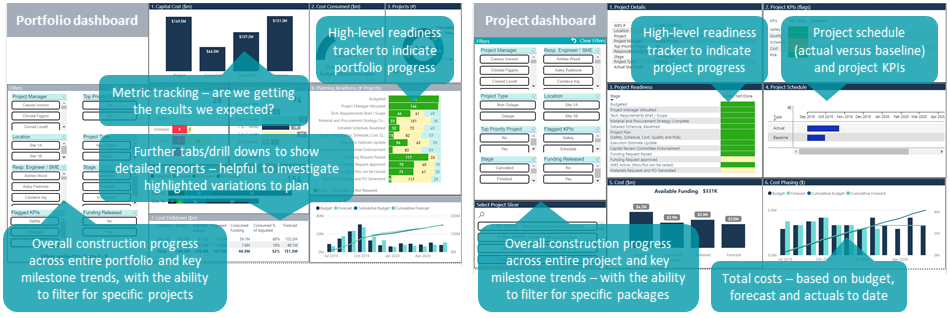Once your sustaining capital portfolio has been optimised and project pipeline prioritised, attention should turn to maintaining capital efficiency.
Delivering projects on time and in budget require diligent management in the best of times – under the current circumstances, this requires translating your ‘newly tuned’ schedule into delivery, with heightened focus on planning, risk identification and management to minimise schedule and cost impacts.
During a crisis, especially one that affects human health, it is critical to thoroughly and vigilantly plan how you will resource your projects. With employee safety at greater risk, well-defined guidelines and procedures are critical to protect your workforce and maintain well-being.
Once your projects have adapted to the new protocols around social distancing and offset shifts, project leads should turn their attention to ensuring they have the required resources and processes to complete the project. This should include plans around how to get people to site – particularly where the workforce is fly-in/fly-out – as well as getting remote teams working effectively.
Beyond this, detailed shutdown plans should be developed to outline what will happen if an extended shutdown is required. This should also cover how the project will re-open once it can restart and how you will address repeated shutdowns if they occur.
The original plans of projects planned and in-progress should be thoroughly evaluated to identify supply chain disruptions. For projects which are already in progress (or soon to start), these disruptions are likely to require rapid adjustments to sourcing plans to mitigate material delays, including:
Robust readiness tracking will help to identify potential disruptions, then plan for supply chain disruption. A master readiness tracker across the entire project portfolio is also helpful, as it provides an overview of all packages, projects and progress. This information will enable your team to monitor rate, readiness and forecast completion dates, so they can rapidly identify if things are going off track – then, intervene as needed to reduce schedule delays and/or cost blowouts.

Setting up a Virtual Project Execution Office (VPEO) is key to managing delivery and risks across the portfolio. The VPEO will become your single source of truth to manage all projects and progress across the portfolio, providing early warnings of emerging issues. This information should be forward-looking, focussing on leading indicators (rather than lagging ones).
This information should be reviewed regularly through structured meetings – these can be run virtually to include both on- and off-site employees. During these discussions, focus should be on critical path activities to identify and eliminate blocks that could cause delays. This process will help keep the project on track, enabling your team to identify potential risks and resolve issues before they become problems.
In the current environment, your primary focus is likely to be on monitoring and proactively managing the health of both your team and your supply chain.

Sustaining capital projects remains critical to maintaining the effectiveness and safety of your operations. More than ever it is crucial to thoroughly understand potential resource and supply chain risks, so you can address them. By identifying risks early and resolving them, sustaining capital projects can be still be delivered safely, on-time and in-budget.
Click to download a printable version of this article

Partner, Partners in Performance
Mohamed is a Partner and Australian Head of Partners in Performance’s Capital Practice. He has 15 years’ experience in capital optimisation, construction productivity, contracting models and performance management in large capital projects. He has served clients in various industries including infrastructure, mining and oil and gas.

Director, Partners in Performance
Frans is a Director and Head of Partners in Performance’s Maintenance and Operations Practice. He has more than 25 years’ experience in operational improvement and line management. He has led performance PMOs and improvement projects in a variety of industries including defence, mining, manufacturing, and oil and gas.
| We actively reduce the climate impact from our operations and invest in community-based climate solutions to balance remaining carbon emissions |